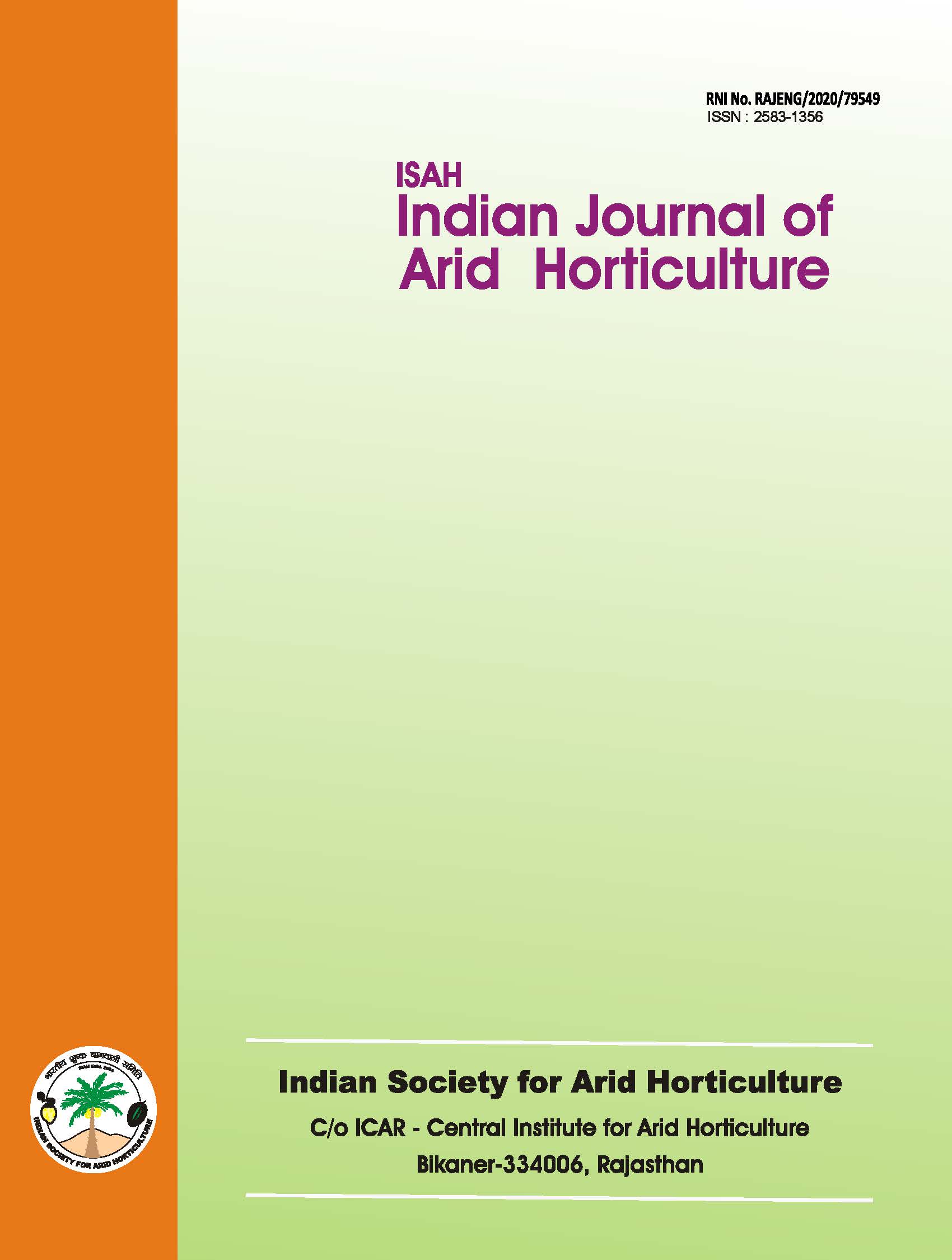Field evaluation of bottle gourd genotypes for resistance against Alternaria leaf blight in Western Rajasthan
Keywords:
leaves, vegetable, resistanceAbstract
Rajasthan, though the largest state in the country, the area under vegetables in the state is merely 135682 ha with a production of 818900 million tons (Anon. 2009). The productivity in the state is 6.0 t/ha, which is quite lower than the national productivity of 16.1t/ha. Bottle gourd {Lagenaria siceraria (Mol.) Standl.) is a commonly grown vegetable in India. It is also grown in Ethiopia, Africa, Central America and other warmer regions of the world. It is also suitable for cultivation throughout in the Rajasthan state. The fruits can be used as a fresh vegetable. As a vegetable, it is easily digestible, even by patients (Thamburaj and Singh, 2000). It is gaining importance due to its high yield potential and steady market price throughtout the season. Alternaria leaf blight caused by Alternaria cucumerina (E.&E.) Elliot, is found throughout the world on various cucurbits (Ibrahim et al., 1975). In Egypt, Prasada et al. (1972) found that the yield loss from a single plant was as high as 63% with early infection of Alternaria leaf blight in muskmelon when environmental factors were favourable for development of this disease. Bottle gourd is affected by many fungal diseases, of which Alternaria leaf blight caused by Alternaria cucumerina (E.&E.) Elliot is one of the most important diseases that quantitative and qualitative losses to the crop. Lesions tend to appear first on the older leaves as small, circular, light to dark brown spots and form concentric rings on the leaves of crop and spreads covering some leaf area. The cheapest, practical and economical control of the disease can be achieved by resistant varieties against the disease (Jadhav and Sharma, 1983). Plant resistance is an effective and environmentally safe means of reducing losses caused by the fungal disease. Keeping in view this important component of integrated disease management, efforts were made to screen bottle gourd genotypes for resistance against Alternaria leaf blight under hot arid conditions of Rajasthan.Downloads
References
Anonymous. 2009. National Horticulture Board, Data
Base.
Carmody, B. E., Miller, M. E. and Grisham, M. P. 1985. A
technique to screen muskmelons for resistance to Alternaria leaf blight. Pl. Dis. 69: 426-428. Ibrahim, A. N., Ab-del-Hak, T. M. and Mahrous, M. M. 1975. Survival of Alternaria cucumerina the causal organism of leaf spot disease of cucurbits. Acta Phytopathol. Acad. Sci. 10: 309-313. Jadhav, V. M. R. and Sharma, B. L. 1983. Field reaction of
mungbean (Vigna radiata L.) Wilczek varities to Cercospora leaf spot in north Madhya Pradesh.
Legume Res. 6:99100.
Kumar, S. and Rani, A. 2010. Resistance in pigeonpea to Alternaria blight. Ann. Pl. Protec. Sci. 18 (2): 548-549.
Prasada, R., Khandelwal, G. L. and Jain, J. P. 1972.
Epidemiology, forecasting and control of Alternaria blight of cucurbits. Proceedings of the Indian National Science Academy. 37: 301-308. Thamburaj, S. and Singh, N. 2000. Textbook of Vegetables, Tubercrops and Spices. Published by DIPA, ICAR, New Delhi. 469 pp

